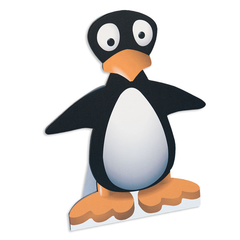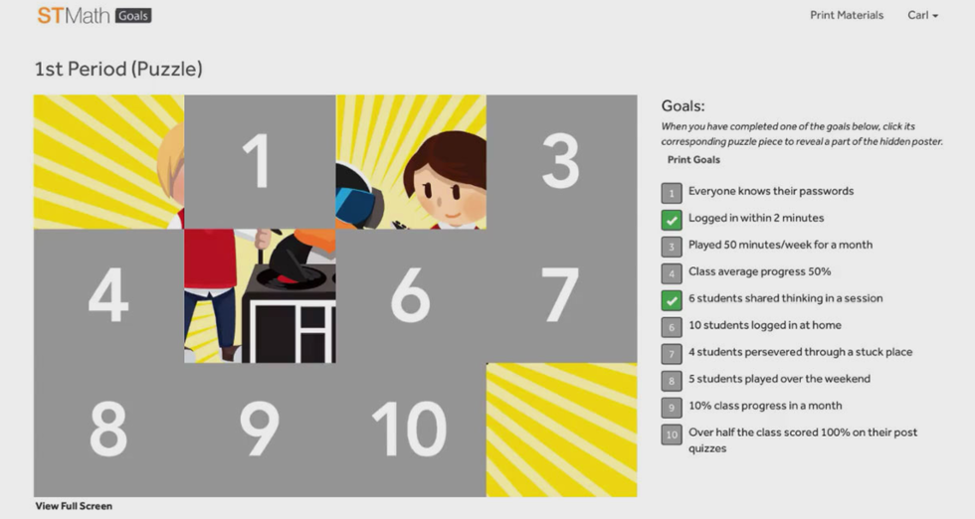Every student is different. There are various external and internal factors that may affect the pace of a student’s learning.
Why then, do we expect all students to complete a certain amount of work by a certain date? And offer rewards like ice cream, when we know not all students are likely to reach the same goal?
Research around motivation can shed some light on best practices for inspiring the type of motivation that will last beyond that ice cream cone and cultivate a lifetime love of learning. And there are examples of educators from across the country who are implementing unique goal setting and tracking systems that enable all students to succeed.
Extrinsic Motivation and Intrinsic Motivation in the Classroom
Extrinsic motivation involves expecting a reward for completing a task. For example, every month a school offers a special breakfast for students with perfect attendance.
With intrinsic motivation, the reward is completing the task. It’s that rush of accomplishment and satisfaction of completing your goal.
Research shows that intrinsic motivation is more impactful than extrinsic motivation as far as developing good habits and cultivating deeper learning. So it’s interesting that many edtech programs focus on extrinsic rewards such as badges and customization for an avatar. Especially when research shows that these extraneous elements distract from the learning.
That’s not to say that extrinsic rewards are all negative. One study shows that when rewards were expected, intrinsic motivation decreased, but when they were unexpected, intrinsic motivation was unaffected. Incorporating some extrinsic rewards (for example, a surprise pizza party for students who achieve their goals), can complement the intrinsic rewards.
Educators Using Custom Goals in their Classrooms
These educators show us not only how differentiating goals for many levels of students is possible, but also how they’ve increased student engagement without the use of expected extrinsic rewards.
1. Custom goals can be specific to the class or specific to the individual student.
Loving the goal chains for @JiJiMath pic.twitter.com/X6DkxOx5JD
— Stephanie Howell (@mrshowell24) September 14, 2017
Take this goal chain from educators Kristen Ramsdale and Melissa Bate at Pickerington Local School District in Pickerington, Ohio. When a student meets a goal, they get to add a paper to the chain. When the chain hits the floor the class gets a reward and starts another chain.
Students are working on individual goals while working toward a class goal, so each student can work at their own pace and contribute to the class goal.
(Next page: 3 more ways educators are using custom goals)
2. Custom goals can focus on the journey, rather than the destination.
Our school is ready for a great year with @JiJiMath pic.twitter.com/EP90RYykYt
— Suzanne Hill (@Shillwalnut) September 7, 2017
Second grade teacher Suzanne Hill from Walnut Hill Elementary in Woodbury, New Jersey, created an inspiring bulletin board that showcases the journey JiJi the penguin (from software program ST Math) takes as students complete their goals in the program.
3. Custom goals can be adjusted over time.
These two awesome Panthers made their goal of 10 percent increase in progress or more! #STMath #cpsbest @ParkadePanthers pic.twitter.com/J78bBuTDIY
— Coop’s Rockin’ Class (@ms_ecooperclass) September 8, 2017
“I set weekly goals for the class to increase their ST Math progress by a certain percentage. This week it was 10 percent and last week it was 5 percent. That way everyone has a chance to be successful. Everyone progresses at a different pace, so I have seen more success when I make it more personalized. I increased the goal by 5 percent to make it more challenging for my class because the majority of the class had well over 5 percent progress the previous week.” – Ms. Cooper from Parkade Elementary in Columbia, OH.
4. Custom goals give an opportunity to celebrate instances of perseverance or learning from mistakes, rather than just completion of tasks.

University Prep in Denver, Colorado, gives out a perseverance penguin to a scholar who demonstrates perseverance. The student gets to keep the penguin on their desk all week!
New Custom Goal Posters in ST Math
Do you use ST Math in your classroom?
While percentage progress in the program is a straightforward way to measure student progress, it isn’t the only way.
You can now create your own goal posters for your class with specific goals that are SMART and tailored to your students. These posters are available as interactive digital posters online, or they can can be printed to use on a bulletin board.
Explore the new poster tools on the ST Math Central resource site!
ST Math Goal Ideas
Getting started:
- Each student knows their password
- Each student is logged in within 2 minutes
Celebrating math mastery:
- 3 percent class progress in one session
- # students solved >100 puzzles in one session
- Class average progress 50 percent
- # students scored 100 percent on post quizzes
Making deeper math connections:
- # students shared thinking in one session
- Made # connections between ST Math game and math curriculum
- # students used physical manipulatives during session
- # students shared how they learned from their mistakes
Celebrating perseverance:
- Played 90 minutes/week for one month
- # students this month persevered through a stuck place
- # students logged in at home in one week
- # students passed Big Seed
- # students played over the weekend

[Editor’s note: This post originally published on the MIND Research Institute Blog.]

